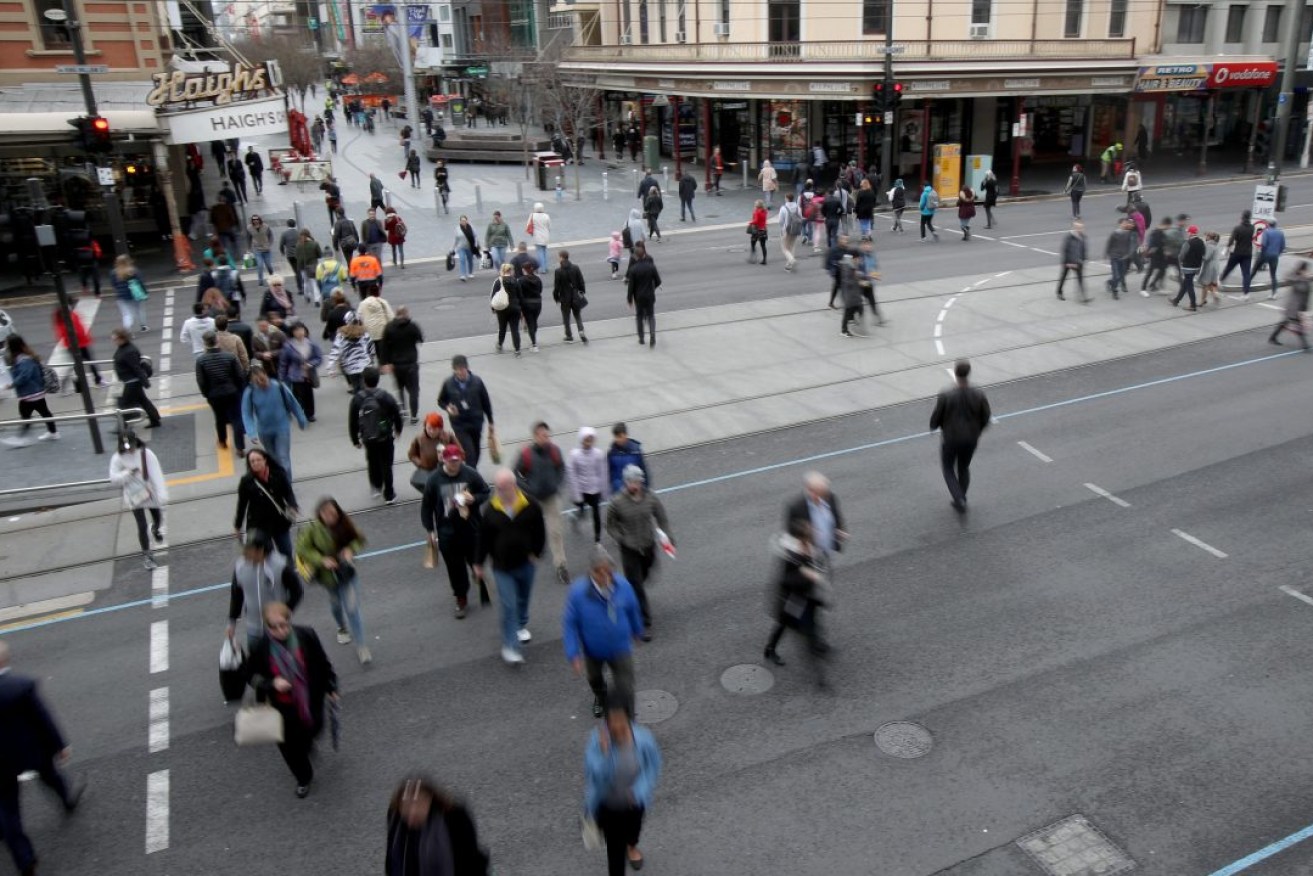Omicron surge deters more city office workers
More Adelaide office workers chose to work from home last month as South Australia’s COVID-19 cases peaked, with office occupancy in the CBD dropping to below two-thirds.


Photo: Kelly Barnes/AAP
Data from the Property Council of Australia’s monthly “Office Occupancy Survey” shows Adelaide’s office occupancy rate dropped from 71 per cent in June to 64 per cent in July.
The CBD’s average monthly occupancy rate also sits at 54 per cent this year, according to the data, well below the 67 per cent average rate recorded in 2021.
The figures represent a percentage of pre-COVID occupancy levels, estimated to be around 90 per cent.
Despite Adelaide’s drop, the 64 per cent occupancy rate is still the second highest of the six capital cities measured in the Property Council’s July report. Only Perth ranked higher at 71 per cent.
Adelaide is also substantially higher than the July occupancy rates recorded in Melbourne (38 per cent) and Sydney (52 per cent), both of which endured long COVID-19 lockdowns last year.
Brisbane’s CBD also recorded an occupancy drop from 64 per cent to 53 per cent last month.

City by city office occupancy rates up to July 2022. Graph: Property Council
SA Property Council executive director Daniel Gannon said South Australia’s latest COVID-19 wave had impacted an otherwise “steady increase in the number of workers returning to workplaces”.
“A wave of Omicron and flu infections has caused office occupancy rates across most major cities to go backwards in July, including Adelaide,” he said.
“The latest monthly results are obviously disappointing for return-to-office momentum, but unsurprising due to the rise in case numbers.”
South Australia’s third wave of COVID-19 prompted health authorities last month to recommend businesses and universities consider work from home arrangements and mask requirements.
The wave, driven by the more transmissible BA.4 and BA.5 Omicron subvariants, peaked on July 18 at 5038 daily cases.
“Looking ahead, we are encouraged by the fact that this Omicron wave seems to have peaked and that spring is now just around the corner,” Gannon said.
“Hopefully, this means Adelaide’s workplace recovery momentum can resume.”

Peak day and low day occupancy levels in CBD offices. Graph: Property Council
A state government work from home order during South Australia’s first Omicron wave has contributed to this year’s lower office occupancy rates, which bottomed out at 11 per cent in January 2022.
The highest level of worker activity in the Adelaide CBD during the pandemic was recorded in June 2021 at 80 per cent.
The national Property Council survey found the preference for greater working flexibility was the most common reason for the current occupancy levels, followed by health concerns about returning to work.
The survey was conducted between July 25 and August 1.
Office occupancy rate change from June to July (lowest to highest)
Melbourne: 49 per cent to 38 per cent
Sydney: 55 per cent to 52 per cent
Brisbane: 64 per cent to 53 per cent
Canberra: 53 per cent to 61 per cent
Adelaide: 71 per cent to 64 per cent
Perth: 65 per cent to 71 per cent




